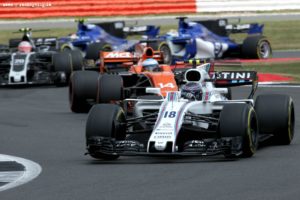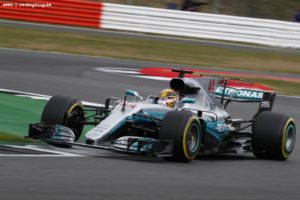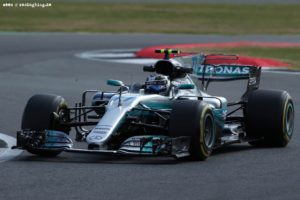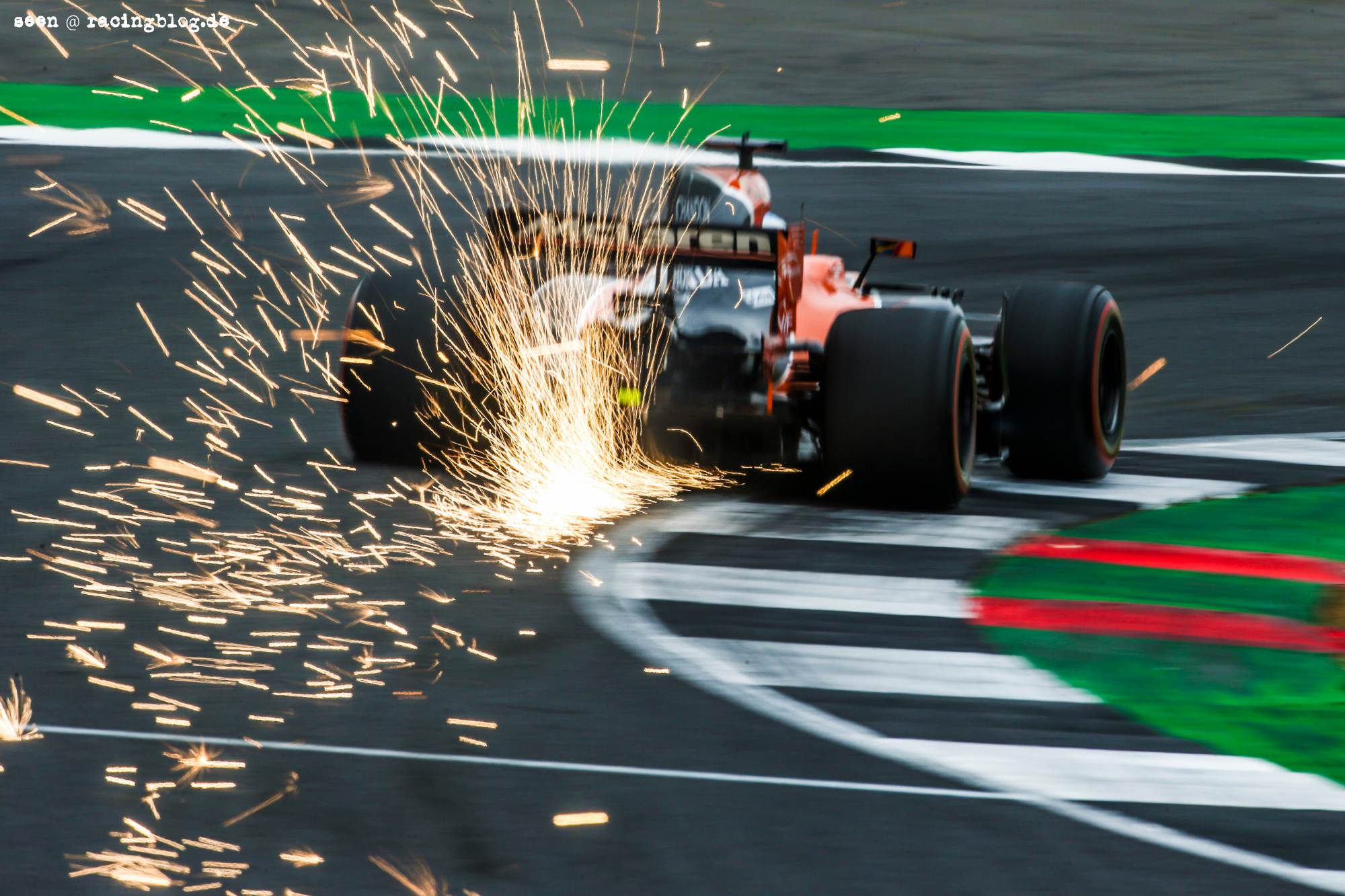The British Grand Prix turned out to be a dominant win for Lewis Hamilton and Mercedes, but the strategy that underlined the rest of the race outcome was fascinating as teams were caught in two minds whether to go with two stops or one.
 And many, having opted for the latter due to low degradation in the opening stint, found themselves with tyre problems at the end of the race. Ferrari suffered two costly tyre failures in the closing stages. bVettel pitted early to undercut Verstappen, but with Valtteri Bottas coming up quickly from behind on a one-stop reverse strategy (soft tyre first, supersoft second), Vettel didn’t have the scope to do a two stop strategy without losing position to the Finn, so he went for the finish on the same set of tyres. Conversely both Bottas and Daniel Ricciardo defied these issues and forced their way through the field from 9th and 19th places respectively with offset strategies, which took advantage of the ‘overcut’ (running longer than your rivals) and of the powerful DRS advantage at Silverstone.
And many, having opted for the latter due to low degradation in the opening stint, found themselves with tyre problems at the end of the race. Ferrari suffered two costly tyre failures in the closing stages. bVettel pitted early to undercut Verstappen, but with Valtteri Bottas coming up quickly from behind on a one-stop reverse strategy (soft tyre first, supersoft second), Vettel didn’t have the scope to do a two stop strategy without losing position to the Finn, so he went for the finish on the same set of tyres. Conversely both Bottas and Daniel Ricciardo defied these issues and forced their way through the field from 9th and 19th places respectively with offset strategies, which took advantage of the ‘overcut’ (running longer than your rivals) and of the powerful DRS advantage at Silverstone.
The key to doing well was having strong front tyre stability through the high-speed esses at Maggots/Becketts, which gave a good exit onto the Hangar Straight for an overtake into Stowe corner. We saw speed differentials of over 30km/h there between cars with and without DRS, but only if the front tyres were stable. Another thing that caught out several teams was that the pit loss time was longer than in previous seasons, as the cars were travelling more quickly on the track relative to the cars in the pits. For teams that were limited on engine mileage in practice and were not able to devote three laps to a simulation of this, positions were lost in the race.
So what was going on behind the scenes and why did the race end as it did?
Pre Race Expectations
 Pirelli decided to bring the supersoft, soft and medium tyres to Silverstone; a revision to their original plan of a step harder. The idea was to try to create more variability in the strategies as most races this year have featured only two of the compounds and have largely been one-stop affairs. Friday practice running was not interrupted by rain and the teams covered a good mileage. Mercedes did not do much long run work on the soft tyres, while Ferrari did a good back-to-back comparison with both cars.
Pirelli decided to bring the supersoft, soft and medium tyres to Silverstone; a revision to their original plan of a step harder. The idea was to try to create more variability in the strategies as most races this year have featured only two of the compounds and have largely been one-stop affairs. Friday practice running was not interrupted by rain and the teams covered a good mileage. Mercedes did not do much long run work on the soft tyres, while Ferrari did a good back-to-back comparison with both cars.
The data showed that Mercedes had a long run pace advantage on supersoft of around three to four tenths of a second to Ferrari, while Red Bull was over a second off, followed by Williams, Force India and an improved Renault. Degradation looked like it would tend towards a two-stop race, with the undercut looking quite strong (ability to pit for a new set of tyres before the car ahead and jump him when he stops). The indicator for that is when the degradation is around 1/10th of a second per lap, or more.
But we have seen the Pirellis behave differently on a Sunday compared to a Friday many times, so strategists were looking to the degradation rate in the first stint as the key indicator or whether to go for one or two stops. On Sunday the degradation was much lower than expected on supersoft so everyone could increase his first stint length. However the degradation was ‘sinusoidal’ which means that it didn’t degrade in a linear way, but had accelerated phases and calmer phases. Managing that and the stint length was very important and one of the reasons why Bottas and Ricciardo did so well.
The other surprise as that the soft tyres were not as fast as expected. The front tyres became the limitation, rather than the rears. Blistering appeared, which didn’t affect the lap time performance but was worrying for the teams, as it often goes down to the canvas. Bottas had finished the race in Austria with a large blister on his front tyre and in the Grand Prix at Silverstone it wasn’t only the faster cars that push their tyres hardest which suffered. Even Sauber, that has the least downforce of any team, suffered blisters at the end.
The debate then was whether to make a precautionary late pit stop, even if it meant sacrificing track position. When you are well up in the points, as Ferrari and Max Verstappen were, this was a tough decision. When the Ferrari tyres failed and both drivers had to pit, that allowed Verstappen to make his cautionary stop just before the end, without losing position.
Valtteri Bottas and Daniel Ricciardo on a roll
 One of the standout drives was Daniel Ricciardo in the Red Bull, who had to start 19th after a power unit issue in qualifying. Like Bottas, his best strategy was to offset himself against the other cars and create opportunity to pick up places when they stopped or by overtaking them. He managed to go to Lap 32 on a set of supersofts, giving him an offset of almost 10 laps against the Force India cars and Hulkenberg.
One of the standout drives was Daniel Ricciardo in the Red Bull, who had to start 19th after a power unit issue in qualifying. Like Bottas, his best strategy was to offset himself against the other cars and create opportunity to pick up places when they stopped or by overtaking them. He managed to go to Lap 32 on a set of supersofts, giving him an offset of almost 10 laps against the Force India cars and Hulkenberg.
Ricciardo made many overtakes in this race, especially into Turn 15, Stowe corner. He managed to maintain strong pace and keep the front tyres alive so that when he exited the high speed esses onto Hangar Straight he had a high closing speed that when the DRS was then opened, he could easily pass. For example when he passed Perez in the Force India, he was doing 320km/h with DRS and Perez was doing 288km/h. Although Perez has a Mercedes engine in the back of the car, he could not cope with that speed differential. Ricciardo also passed many cars into Turn 6, Brooklands, at the end of the other DRS zone. He passed both Saubers, Kvyat, Stroll and at the end of the race Hulkenberg into there.
This was an extreme example of a phenomenon we have seen a lot this season; on a track like Silverstone the DRS is very powerful as the drag is higher in the first place on these cars and the front tyre limitation accentuated that on Sunday.
Valtteri Bottas was forced to start 9th after a gearbox change penalty and used a reverse strategy of starting on soft tyres, then using supersofts at the end. Mercedes were hoping that Ferrari and Red Bull would get into a strategy battle where one undercut the other, which would give Mercedes the chance to go long with Bottas to Lap 32 and overcut Verstappen. He was also able to get Vettel because the tyre offset at that point when Bottas caught Vettel meant he was on fresher Supersofts with Vettel on older softs. This is exactly what happened with Vettel on Verstappen.
 However, Bottas would not have caught Raikkonen had the older Finn not hit problems with his front tyre at the end. There was a point in the race, between Laps 35 and 40, when Ferrari could have been forgiven for thinking about switching their cars around, with Bottas closing in on supersoft tyres and Raikkonen just 4 seconds ahead of Vettel. In fact there wasn’t even a discussion about it on the radio.
However, Bottas would not have caught Raikkonen had the older Finn not hit problems with his front tyre at the end. There was a point in the race, between Laps 35 and 40, when Ferrari could have been forgiven for thinking about switching their cars around, with Bottas closing in on supersoft tyres and Raikkonen just 4 seconds ahead of Vettel. In fact there wasn’t even a discussion about it on the radio.
On the face of it, it would have made sense as it would have given Vettel protection from Bottas in the closing stages and the flat spot he got on his front tyre -fighting with Bottas – that later failed, could have been avoided. But the reality was that Raikkonen was out of reach of Bottas and by slowing Raikkonen down to let Vettel pass, the team risked losing both positions to Bottas. It would have needed Raikkonen to fight with great commitment to hold Bottas at bay.
So this was an interesting decision. If Ferrari’s interest was purely Vettel’s drivers’ championship campaign, they might have tried it. But here the decision was to try to secure second place for Raikkonen, who had been the stronger Ferrari driver at Silverstone anyway. Vettel’s race was compromised by losing a position to Verstappen at the start and then by pitting early to make the undercut on Verstappen, which meant he had a longer second stint than ideal on the soft tyres.
Verstappen can now afford to be very aggressive in races as his chances of winning the championship have gone, so that is something Ferrari and other rivals have to bear in mind when thinking of race strategy. Ferrari had to go even more aggressive on him to get Vettel ahead and ultimately paid a price. The other small point worth noting is that Esteban Ocon finished ahead of Sergio Perez in a race for the first time, having passed him off the start line.


